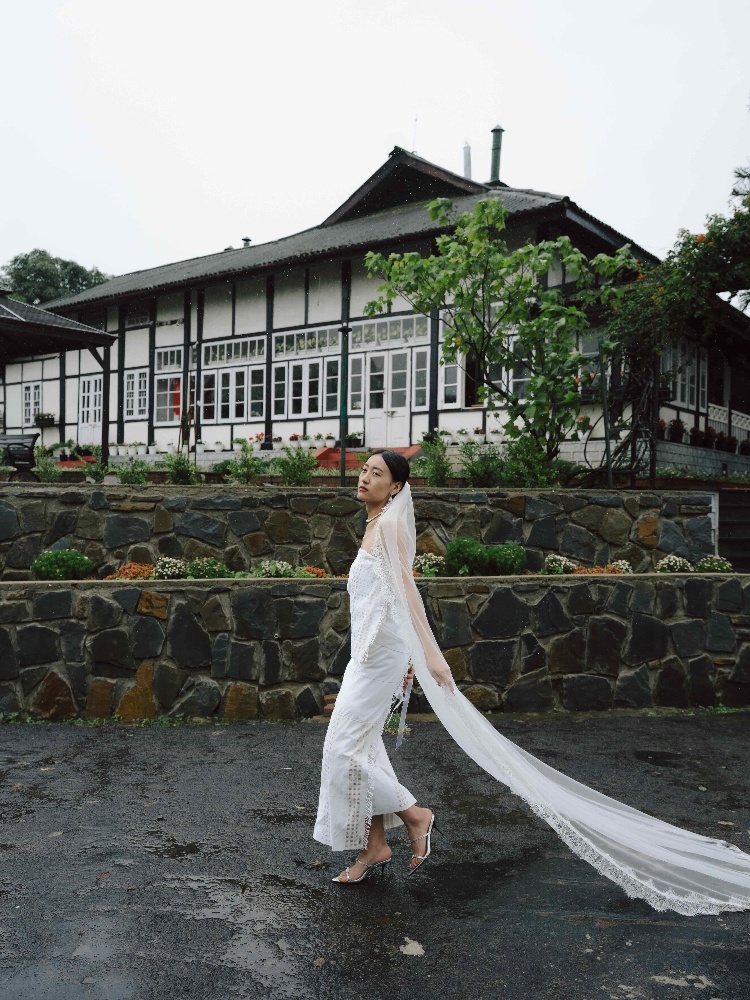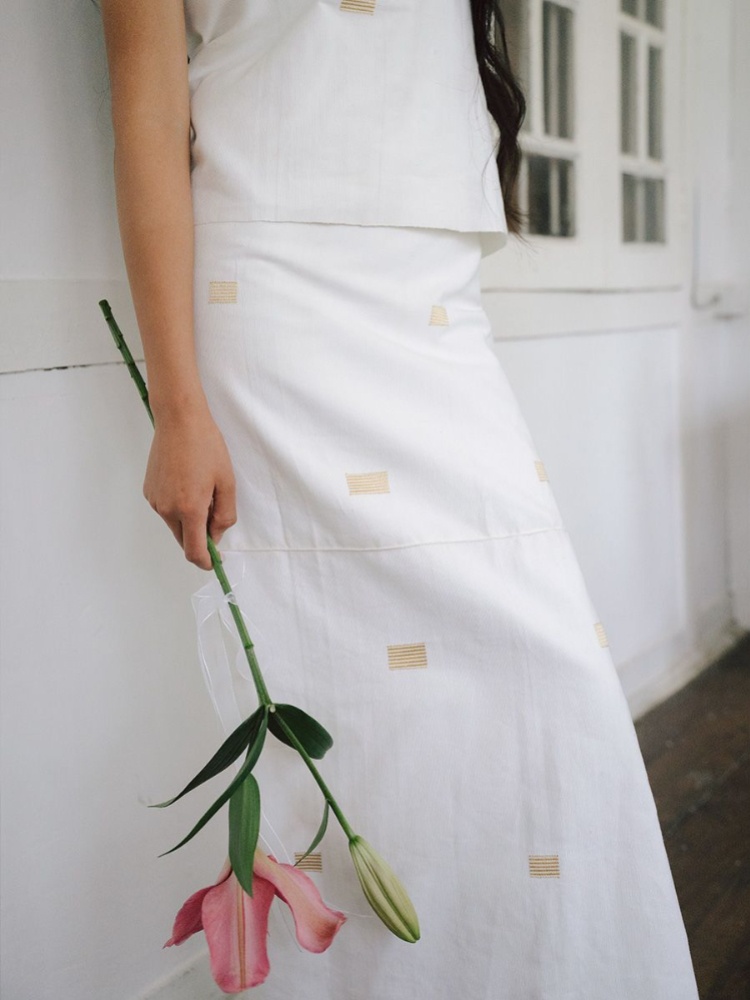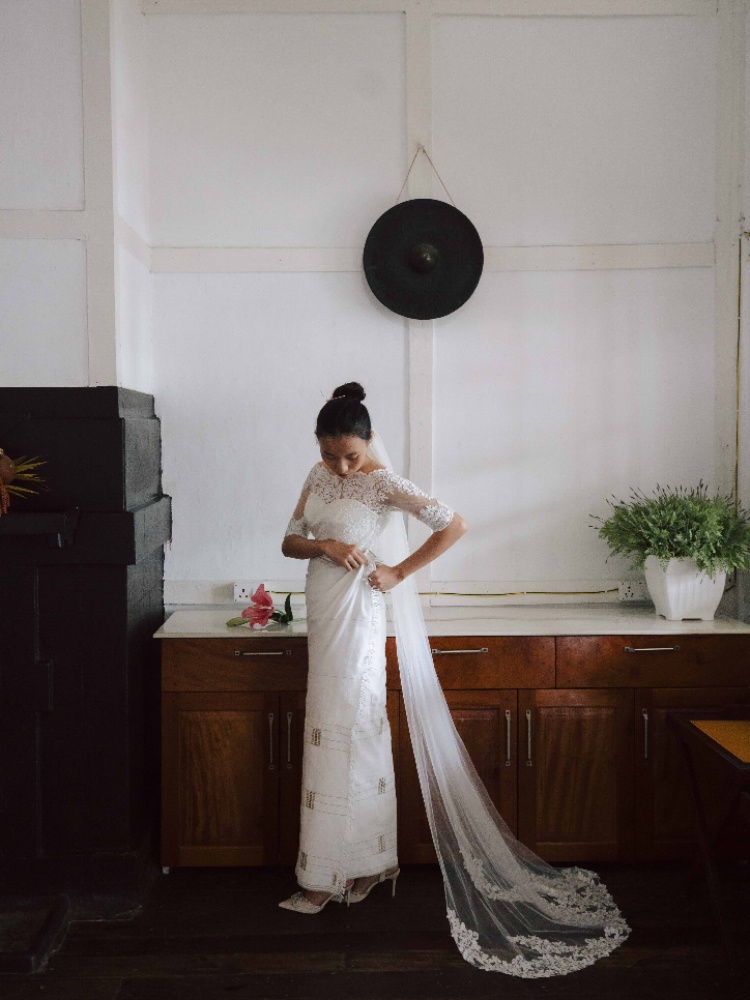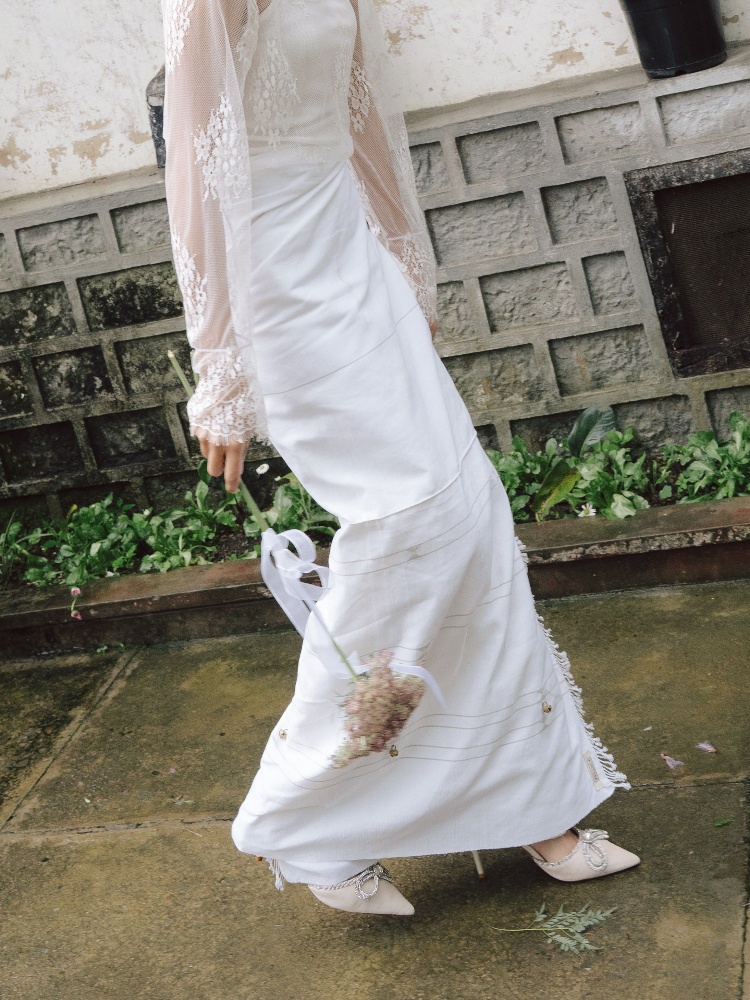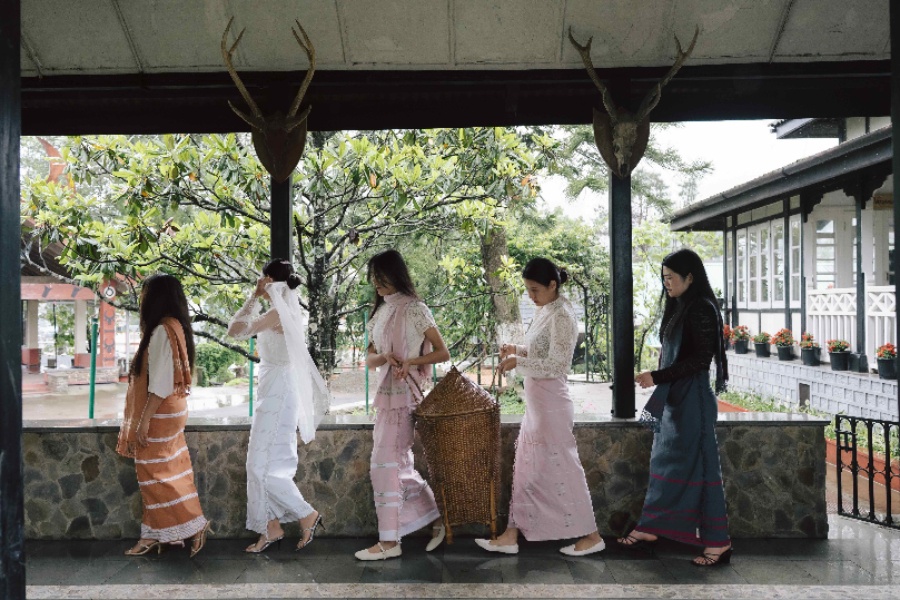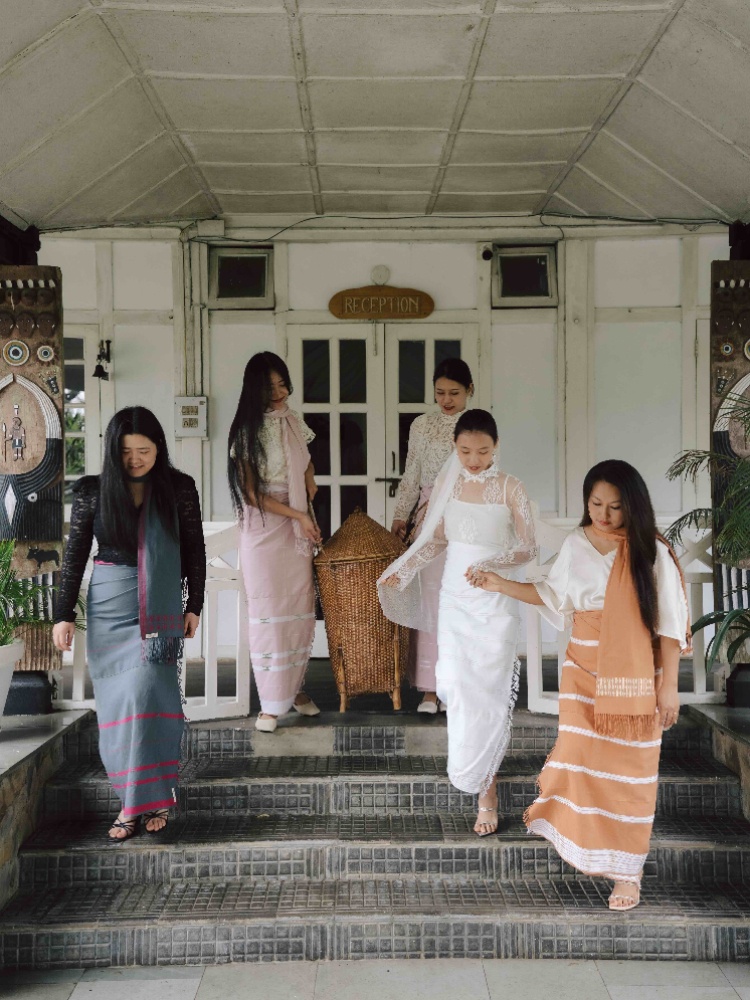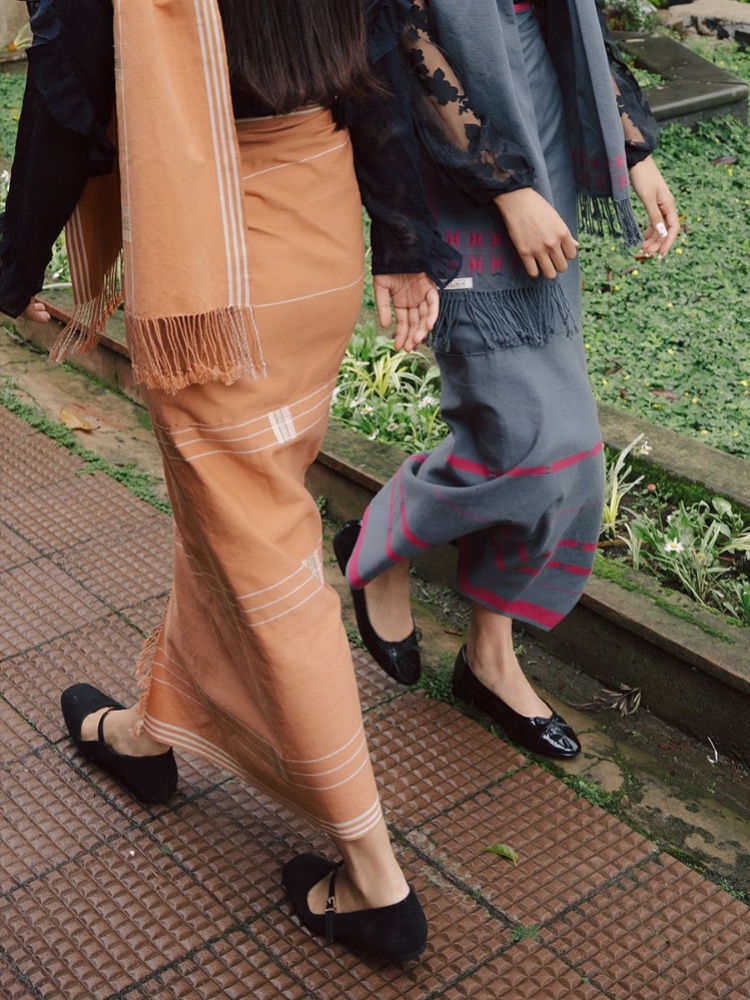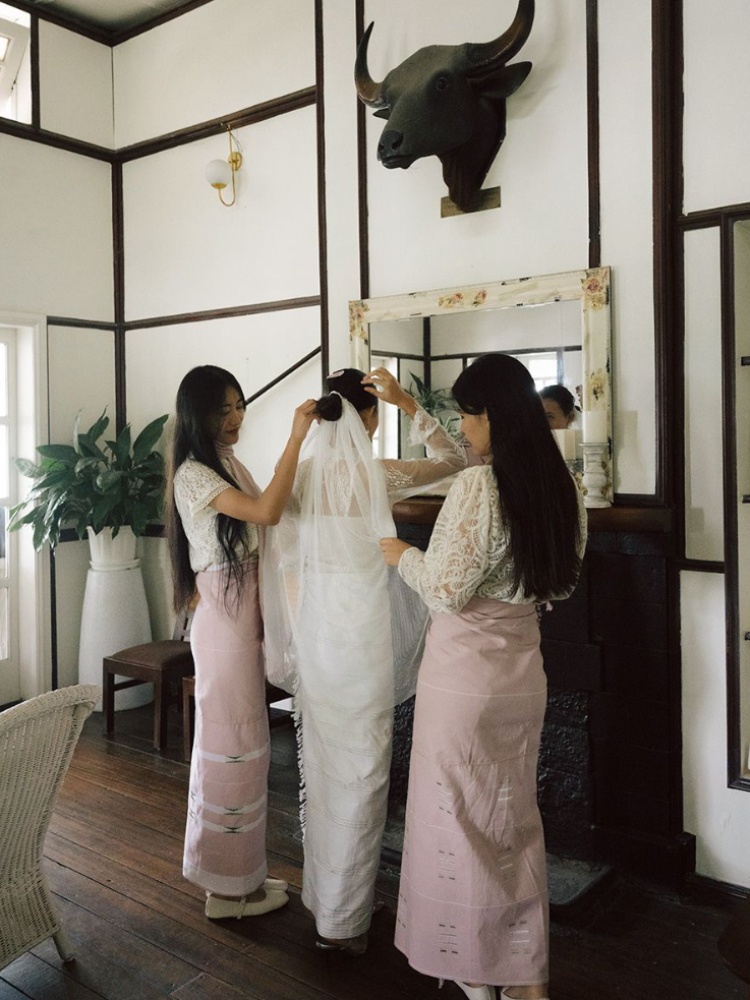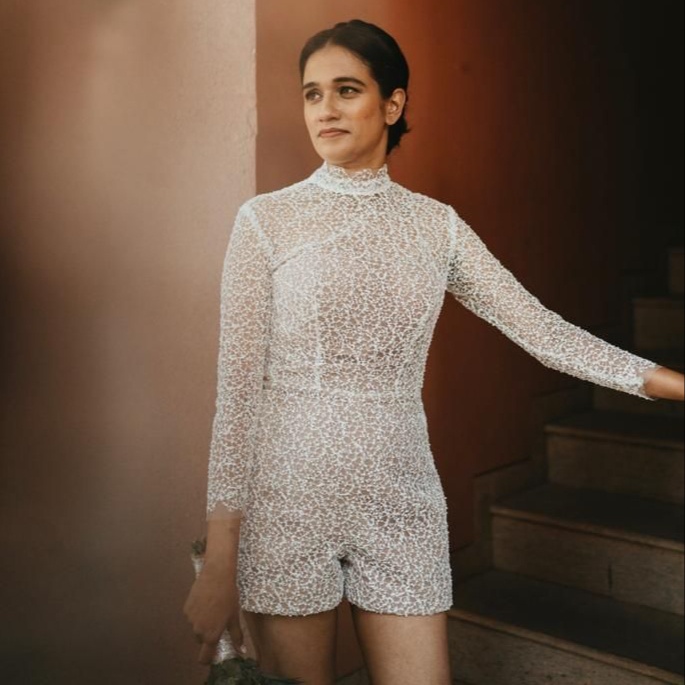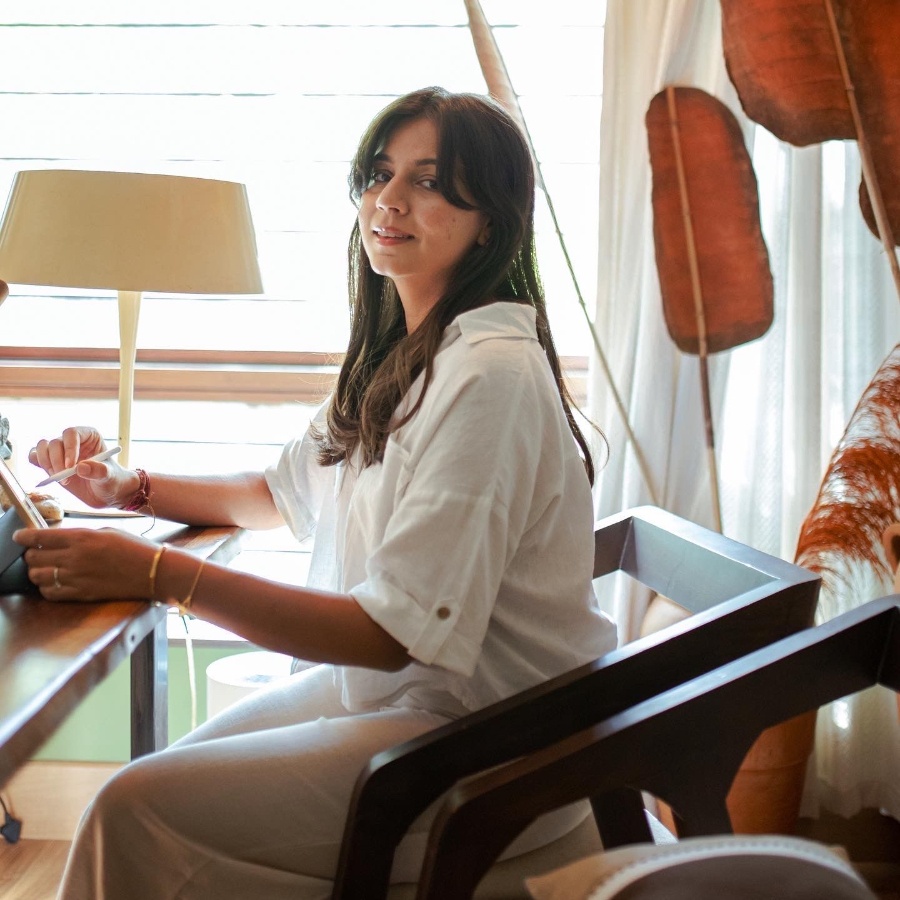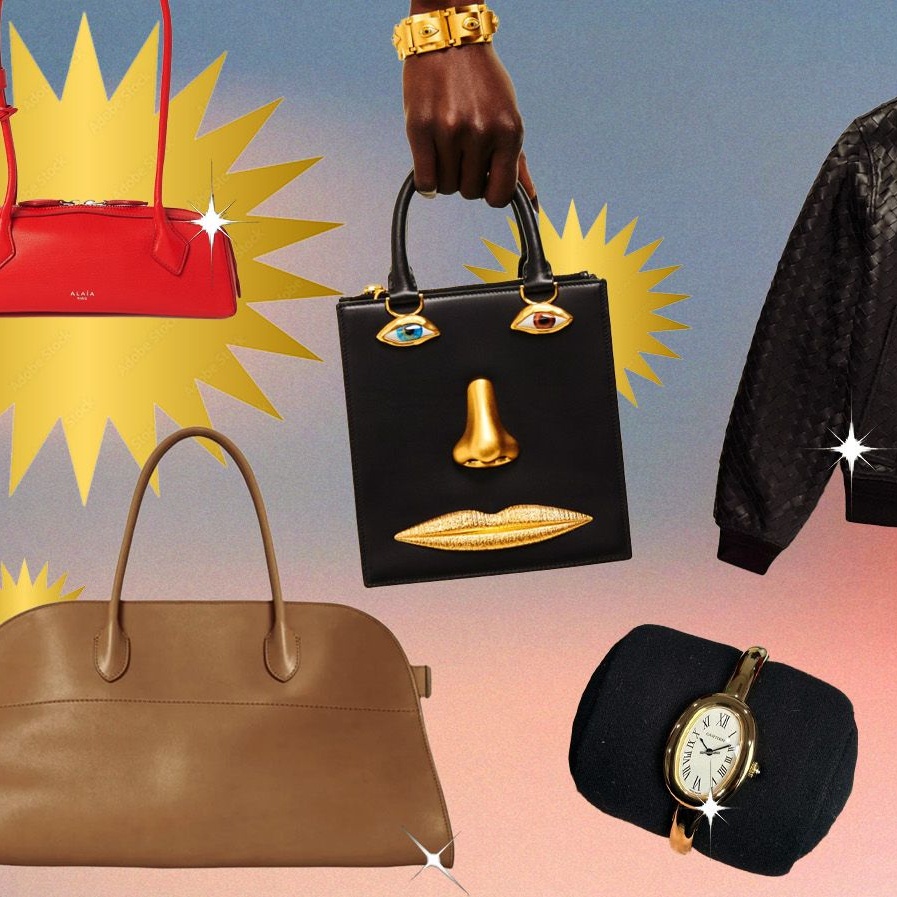Growing up in Dimapur in the early 1990s, PR professional and textile entrepreneur Moala Longchar would often see brides in white mekhalas—a contemporary take on the traditional Naga wrap skirt. While her mother chose a classic white wedding gown for her wedding in the early ’80s, she remembers her aunts who wore contemporary white mekhalas for their church ceremonies, even while white gowns had already come into the picture. “When it comes to weddings in the new generation, you can only imagine the white wedding gown,” she says. “Honestly, the concept of wearing mekhalas for weddings died out completely when local bridal designers started creating beautiful white dresses, along with imported gowns from China, Thailand, and Korea.”
It was one of those vanishings no one really noticed until it was gone—and it stuck with her. In 2023, she founded Kintem with the idea to reimagine traditional Naga textiles to create “indigenously modern” silhouettes that bridge the gap between tradition and modernity. Think mekhalas, shawls, stoles, and home textiles crafted from natural yarns and silks through traditional techniques like loin loom weaving, hand stitching, and natural dyeing—patient practices that give a garment its soul. Longchar is a second-generation textile entrepreneur who was inspired by her mother’s weaving business, the Wapangla Weaving Unit, which collaborates with a network of Naga weavers from various local communities. The name Kintem translates to “communities” in the Ao Naga dialect, and doubles as both mission statement and design philosophy.
“Nowadays, most women still wear mekhalas for engagements,” Longchar says, “but in the last year or two, we’ve started seeing young brides embracing the mekhala again—not just for ceremonies before the wedding, but for the wedding itself. It’s spilling over into bridal attire.”
